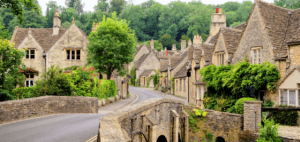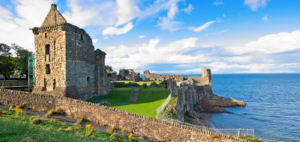Game of Thrones Filming Location- Lough Neagh aka Smoking Sea
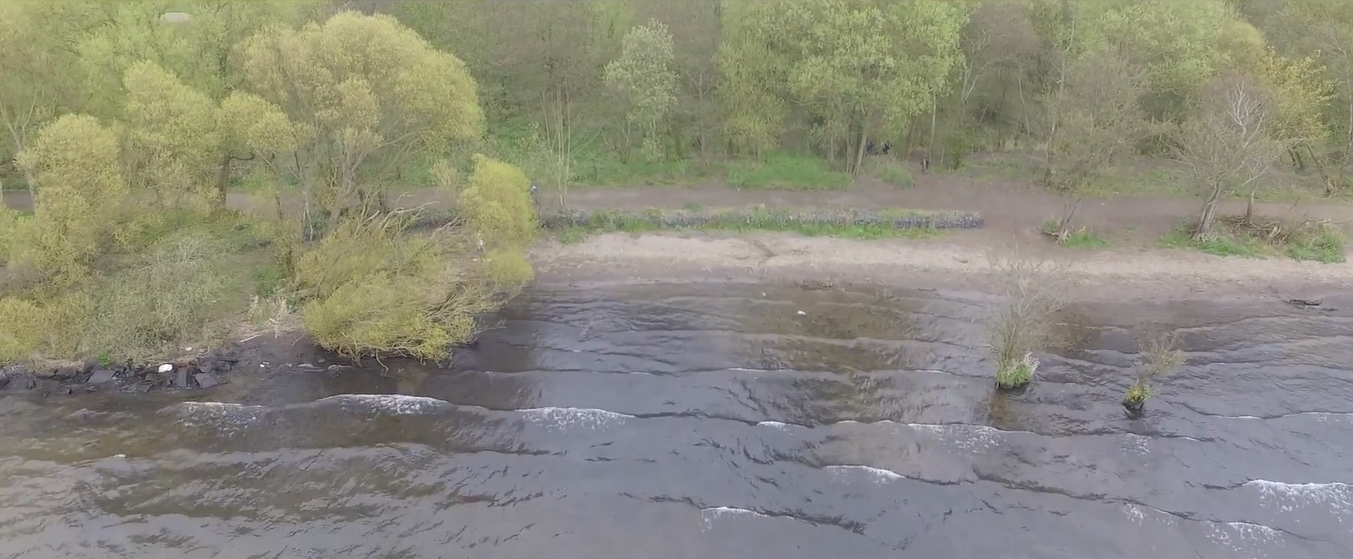
Updated On: April 23, 2024 by Yomna Salah
In the vast realm of television, few series have captured the hearts and minds of audiences quite like HBO’s epic fantasy saga, Game of Thrones. Spanning eight seasons and adapted from George R. R. Martin’s “A Song of Ice and Fire” novels, the show transported viewers to the fictional continents of Westeros and Essos, where noble houses, dragons, and dark magic clashed in a battle for power and survival. Central to the series’ success was its breathtaking filming locations, which brought the fantastical world of Game of Thrones to life in stunning detail.
Among the many stunning locales featured in the series, one is particularly mystical and enigmatic: Lough Neagh, also known as the Smoking Sea in Game of Thrones. Situated in Northern Ireland, Lough Neagh served as the backdrop for several iconic scenes throughout the show’s run, captivating audiences with its natural beauty and eerie atmosphere. In this article, we delve into the allure of Lough Neagh, exploring its significance as a filming location and the magical aura that inspired its portrayal in Game of Thrones.
A Natural Wonder: Lough Neagh
Before it became synonymous with the Smoking Sea of Essos, Lough Neagh was already a notable landmark in Northern Ireland. As the largest lake in the British Isles by surface area, Lough Neagh occupies a central position in the landscape, spanning approximately 151 square miles (392 square kilometres). Its origins can be traced back to the last Ice Age, when glacial activity sculpted the land, leaving behind a vast body of water that would become a defining feature of the region.
Lough Neagh’s significance extends beyond its sheer size; it plays a crucial role in the ecological balance of Northern Ireland, serving as a habitat for diverse flora and fauna. The lake and its surrounding wetlands are home to numerous species of birds, including swans, ducks, and geese, making it a haven for birdwatchers and nature enthusiasts. Additionally, Lough Neagh has historically supported various industries, such as fishing and sand extraction, further contributing to its cultural and economic importance to the region.
Transforming Reality: Lough Neagh as the Smoking Sea
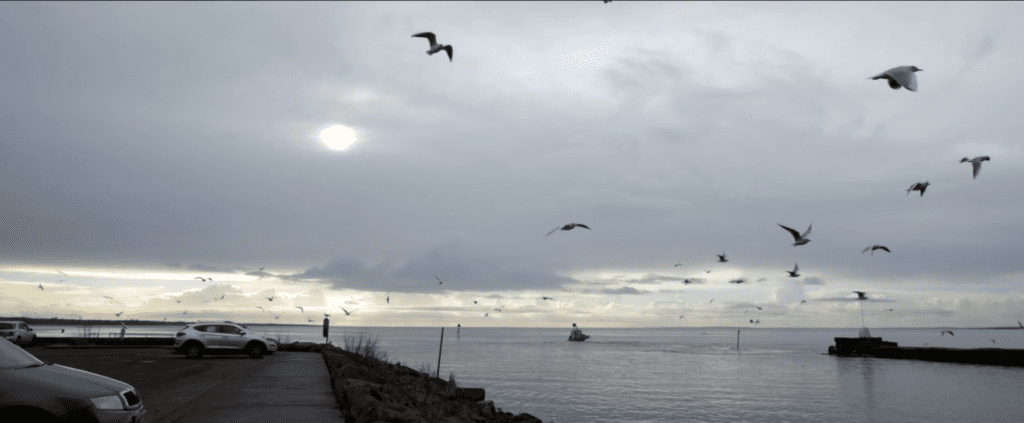
When it came time to bring the fantastical world of Game of Thrones to the screen, the production team sought locations to capture the otherworldly essence of George R. R. Martin’s imagination. Northern Ireland, with its diverse landscapes ranging from rugged coastlines to verdant forests, emerged as a prime filming destination, offering a wealth of settings that closely resembled the fictional realms in the novels.
Lough Neagh stood out among the many sites scouted for filming for its ethereal quality and unique topography. In the lore of Game of Thrones, the Smoking Sea is a mysterious and treacherous body of water in Essos, characterized by its perpetual mist and swirling currents. It is said to be the site of a cataclysmic event that transformed the landscape and left it shrouded in legend and superstition.
For the show’s creators, Lough Neagh provided the perfect canvas to depict the Smoking Sea’s haunting beauty. Its expansive waters and mist-shrouded shores lent an air of mystery and foreboding to the scenes filmed there, evoking the sense of awe and danger associated with the fictional location. Through visual effects and careful cinematography, the production team brought the fantastical elements of the Smoking Sea to life, immersing viewers in a world of magic and intrigue.
Iconic Scenes and Memorable Moments
Throughout Game of Thrones’ eight-season run, Lough Neagh was the backdrop for several pivotal scenes that helped shape the narrative and define the show’s visual aesthetic. Among the most memorable moments filmed on its shores was Daenerys Targaryen’s arrival in Westeros aboard her fleet of ships, accompanied by her dragons and army of Unsullied soldiers.
In this scene, Lough Neagh’s tranquil waters starkly contrast the chaos and conflict unfolding onscreen, underscoring the significance of Daenerys’ long-awaited journey across the Narrow Sea. As her dragons soared overhead and her ships navigated the mist-shrouded expanse of the lake, viewers were treated to a spectacle of epic proportions, made all the more impactful by the natural beauty of the filming location.
In addition to Daenerys’ arrival, Lough Neagh featured prominently in several other critical moments throughout the series, including tense negotiations between rival factions and dramatic battles against the backdrop of its misty shores. Each scene captured the essence of the Smoking Sea, conveying a sense of mystery and danger that added depth and texture to the world of Game of Thrones.
Legacy and Impact
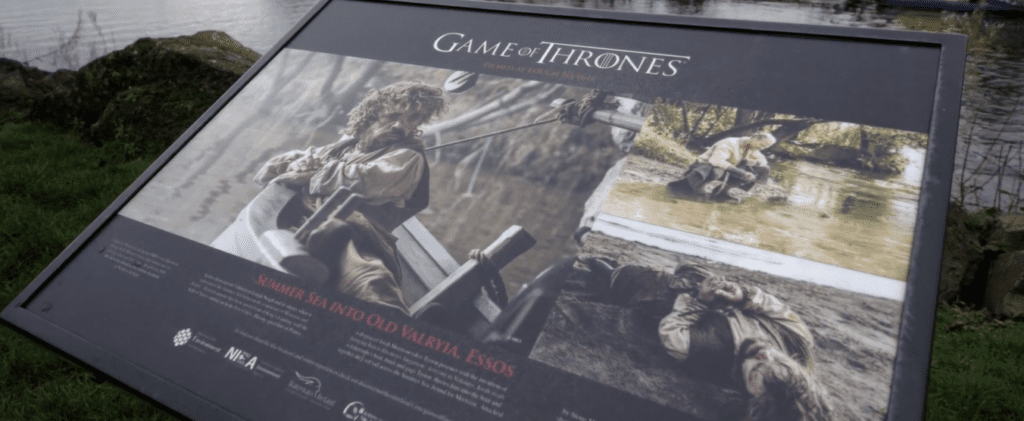
As Game of Thrones ended in 2019, its legacy endured, leaving an indelible mark on popular culture and television. Central to its success was the attention to detail and craftsmanship evident in every aspect of its production, from costume design to set construction. Filming locations like Lough Neagh played a crucial role in bringing the world of Westeros to life, providing a sense of authenticity and grandeur that resonated with audiences around the globe.
Today, Lough Neagh continues to attract visitors eager to explore its natural beauty and discover the magic that captivated viewers of Game of Thrones. Whether embarking on a boat tour of its waters or hiking along its shores, visitors can experience firsthand the allure of this mystical filming location and appreciate its role in shaping one of the most beloved television series ever.
Exploring the Iconic Game of Thrones Filming Locations
Game of Thrones was renowned for its diverse array of filming locations, each contributing to the rich tapestry of the show’s world. Let’s explore some more iconic sites used throughout the series:
- Dark Hedges, Northern Ireland: This stunning avenue of beech trees served as the Kingsroad in Game of Thrones, notably appearing in Season 2 when Arya Stark escapes from King’s Landing disguised as a boy. The eerie, atmospheric quality of the Dark Hedges perfectly captured the sense of foreboding that permeates the series.
- Ballintoy, Northern Ireland: The picturesque coastal village of Ballintoy doubled as the Iron Islands in Game of Thrones. Its rugged cliffs and dramatic seascapes provided the ideal backdrop for scenes set in Pyke, the seat of House Greyjoy. The Iron Islands were prominently featured throughout the series, particularly in storylines involving Theon Greyjoy and his family.
- Castle Ward, Northern Ireland: This historic estate served as the backdrop for Winterfell, the ancestral home of House Stark. Castle Ward‘s imposing castle and sprawling grounds provided the perfect setting for key moments in the series, including the arrival of King Robert Baratheon in the show’s pilot episode.
- Dubrovnik, Croatia: The medieval city of Dubrovnik stood in for King’s Landing, the capital of the Seven Kingdoms. With its ancient walls, terracotta roofs, and labyrinthine streets, Dubrovnik provided a visually striking setting for the political intrigue and power struggles that defined much of the series.
- Šibenik, Croatia: Another Croatian gem, Šibenik, was used to depict the city of Braavos in Game of Thrones. Its stunning architecture, including the iconic Cathedral of St. James, lent an air of mystery and sophistication to scenes in the Free City.
- Mdina, Malta: The ancient walled city of Mdina was the backdrop for several scenes set in King’s Landing’s streets and alleys during the first season. Its historic buildings and narrow passageways added to the authenticity of the show’s portrayal of the capital city.
- Giant’s Causeway, Northern Ireland: This UNESCO World Heritage Site inspired Dragonstone, the ancestral seat of House Targaryen. Its unique rock formations and windswept cliffs lent the island stronghold a sense of grandeur and otherworldliness.
- Doune Castle, Scotland: Doune Castle stood in for Winterfell’s courtyard in the Game of Thrones pilot episode. Its medieval architecture and imposing ramparts provided the perfect backdrop for scenes set in the Stark stronghold.
These are just a few examples of the many stunning locations that brought the world of Game of Thrones to life. From the windswept coastlines of Northern Ireland to the ancient cities of Croatia, each filming location contributed to the series’ immersive storytelling and left an indelible mark on viewers around the world.
Conclusion
The transformation of Lough Neagh into the Smoking Sea for Game of Thrones epitomizes the magic of cinematic storytelling. Through seamlessly integrating real-world landscapes with fantastical narratives, the series’ creators achieved a level of immersion that captivated audiences worldwide. With its natural beauty and mystical ambience, Lough Neagh served as a canvas upon which the epic saga unfolded, adding depth, authenticity, and grandeur to the fictional world of Westeros and Essos.
Moreover, the legacy of Game of Thrones extends beyond the realm of television, leaving an enduring impact on the cultural landscape. The series not only introduced millions of viewers to the rich tapestry of George R. R. Martin’s imagination but also inspired a new generation of storytellers and filmmakers to push the boundaries of visual storytelling. As one of the many iconic filming locations, Lough Neagh remains a testament to the show’s legacy, drawing visitors from far and wide who seek to experience the magic firsthand.
As we reflect on the legacy of Game of Thrones and the role of Lough Neagh within it, we are reminded of the power of storytelling to transcend boundaries and ignite the imagination. Just as the Smoking Sea captured the hearts and minds of viewers, Lough Neagh continues to inspire awe and wonder, inviting us to explore its mysteries and embrace the magic of the world around us. In this way, the legacy of Game of Thrones lives on, not only in the annals of television history but also in the enduring beauty of the landscapes that brought its fantastical world to life.



